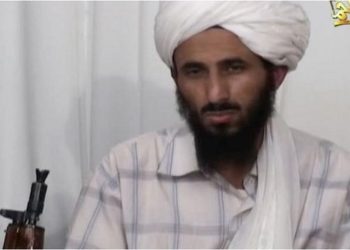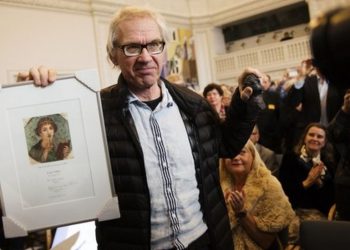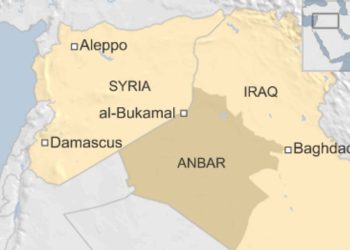BACKGROUND: The second Russian-Chechen war erupted in 1999, and the Russian forces invaded the Republic and presented a formula for resolution of the conflict based on fraudulent elections that brought Chechnya’s former mufti (religious leader), Ahmad Kadyrov, to power. Following Kadyrov’s assassination in May 2004, the power was turned to Alu Alkhanov in the same way, and he became a head of a pro-Russian government. Consequently, political power in Chechnya was divided into three major wings: the first represented by the legitimate president, Aslan Maskhadov, who represents a moderate national movement calling for a peaceful solution to the conflict, pulling Russian forces out of the Chechen Republic, and negotiations. Among the most important figures of this movement are Vice President Ahmed Zakayev and Foreign Minister Ilyas Akhmadov. The second is a radical movement spearheaded by Russia’s number one man on the wanted list, field commander Shamil Basayev. This movement is in alliance with the salafi-jihadist movement and calls for driving the Russian forces out to establish their version of an Islamic state. Finally, the third movement is represented by the pro-Russian Chechen government. This movement is itself divided into two wings: the formal wing represented by Alu Alkhanov, and an informal one represented by Ramzan, the son of the former President Ahmed Kadyrov. Both are supported by Russia, in particular Ramzan, who along with his armed militia has created a state within a state formula. Ramzan Kadyrov’s militia forces are also judged responsible for many of the human rights violation occurring in Chechnya. Maskhadov’s latest announcement is a “power test” in which he seeks to demonstrate his authority over Chechen fighters as a response to Russia’s refusal to negotiate with him on the basis that he is a “terrorist”. Independent reports and pro-Russian Chechen forces confirm that no major attacks or subversive actions by resistance forces have taken place since the announcement went into effect, while Russian and pro-Russian forces have continued conducting so-called mopping-up operations. If Maskhadov’s initiative continues to be successful, it will create a quandary for the pro-Russian movement that capitalizes on the argument that Maskhadov has no claim to power inside Chechnya and does not influence all forces there, hence a peace deal with him would not constitute an end to fighting. The announcement is a power test especially in being a response to the claim that the salafi-jihadist movement is in control of the Chechen resistance, as Russian propaganda and some of the pro-Russian forces attempt to spread.
IMPLICATIONS: The moderate national movement, led by Maskhadov, Zakayev and Akhmadov is the major power center capable of pacifying the situation in Chechnya. The salafi-jihadist movement, on the other hand, is facing a crisis due mainly to the assassination of its leaders. Samer Bin Saleh Bin Abdullah Al-Swelim, better known as Amir Khattab, was poisoned in 2002, and his successor Abu al-Walid al-Ghamidi was killed in April 2004 – effectively killing the main Arab element in the leadership. Chechen supporters were also targeted, such as former Chechen interim President Zelimkhan Yandarbiyev, who was killed by Russian agents in Qatar. The leadership vacuum also worsened the lack of funding that the salafi-jihadists had experienced due to international efforts to halt terrorist financing, and it is apparent in many of the movement leaders’ statements. On the other hand, the Beslan massacre and the hostage-taking of schoolchildren undermined the popularity of Shamil Basayev, who claimed responsibility for the operation. According to most Chechens, Basayev’s action amounted to a desecration of their long struggle for freedom. Probably realizing this, Basayev was the first to announce his adherence to Maskhadov’s order. Indeed, no resistance operations were recorded in the first days following the announcement of the cease-fire while at the same time human rights organizations recorded an escalation in arrests of citizens by local and federal forces. The last movement, represented by the pro-Russian government, is also facing several dilemmas. The first is it near total lack of legitimacy; another is the very real possibility of conflict between its formal and informal divisions. There is increasing evidence of Kadyrov Jr.’s involvement in corruption, including the illegal trafficking of oil and support for armed militias.
CONCLUSIONS: While Maskhadov wishes to prove his power in Chechnya and that this is the best solution for a peaceful finale to the Russian-Chechen war, the rejection by Moscow and the pro-Russian forces in Chechnya of the cease-fire is important. Accordingly, the pro-Russian government, supported by Russian forces, is likely even to escalate its provocative actions as part of its so-called mopping-up policy. As a result, there is a risk that the radical wing of the Chechen resistance will break the cease-fire and will proceed with attacks on Russian forces. Maskhadov, as mentioned above, ordered Chechen forces to resort to weapons only in self-defense. The real danger is that Russia seems to believe that rejecting the initiative, or at least not welcoming it, will imply a success of its policy of ‘chechenizing’ the conflict. It would have been more feasible for Russia to welcome Maskhadov’s initiative – or at least not reject it out of hand – because continuing with this policy of obduracy and refusal to negotiate with Maskhadov will only keep the reins in the hands of those benefiting from this brutal war.
Source: Central Asian Caucasus analyst











